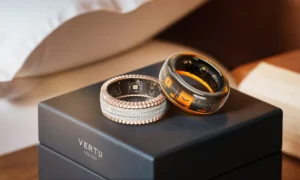Do Smartwatches Really Monitor Blood Pressure Accurately

Do smart watches monitor blood pressure? Many people use smart watches to keep an eye on their health. Recent studies show that smart watches do not work as well as regular blood pressure cuffs. Some watches, like the Samsung Galaxy Watch Active 2, do not provide reliable blood pressure readings. Still, almost 96% of people use smart watches to monitor blood pressure. Because so many individuals rely on them, understanding their accuracy is crucial for making informed health choices.
Key Takeaways
- Smartwatches can check blood pressure. They are not as exact as regular cuffs. Use them to see changes over time, not for making health choices.
- Read the setup steps closely to help accuracy. Sit still when you measure. Keep your wrist level with your heart. Make sure the watch is tight but comfortable.
- You need to calibrate often. Test your smartwatch every two to four weeks. Use a regular monitor to check if it is right.
- Smartwatches do not work for everyone. Some health problems, like irregular heartbeats, can change results. Talk to your doctor if you are worried.
- Pick smartwatches with good features. Look for ones that are accurate and easy to use. Make sure they work with health apps to help you track your health.
Do Smart Watches Monitor Blood Pressure?

How Smartwatches Measure Blood Pressure
You might ask if smartwatches can check blood pressure. Many smartwatches use special sensors called optical sensors. These sensors shine light on your skin and watch how blood moves. The watch picks up signals from your pulse and sends them to a small computer inside. This computer looks at the signals, takes away extra noise, and finds what matters. Then, a machine learning model guesses your blood pressure. You see two numbers, systolic and diastolic, on your watch screen. Some watches also send this information to your phone so you can keep track.
To measure blood pressure with a smartwatch, you usually need to sit still. You should follow the steps shown on the screen. The watch may tell you to put your arm in a certain way. It uses its sensors to check your blood pressure and shows you the results in a few seconds. This makes it easy and fast to check your blood pressure at home or when you are out.
Technology Used in Blood Pressure Monitoring
Smartwatches do check blood pressure, but they use different technology than regular cuffs. Here are the main ways smartwatches measure blood pressure:
- Photoplethysmography (PPG): This uses light sensors to watch changes in blood under your skin. The watch uses PPG data and pulse transit time to guess your blood pressure.
- Electrocardiography (ECG) Integration: Some smartwatches use ECG sensors to record your heart’s electrical signals. By using both ECG and PPG, the watch can check blood pressure better.
- Cuffless Pressure Sensors: These sensors feel changes in how stiff your arteries are. They help the watch check blood pressure without a cuff.
To use these technologies, you just wear the smartwatch and do what it says. The watch uses its sensors to get data and shows your blood pressure numbers.
Smartwatch blood pressure checks have gotten better in the last few years. Now, watches have improved sensors and smarter computer programs. The table below lists some of the biggest improvements in the past five years:
| Advancement Type | Description |
|---|---|
| Sensor Technology | Sensors now give more exact and steady measurements. |
| AI Integration | AI helps look at data quickly and find odd results. |
| Machine Learning | Machine learning makes blood pressure guesses more correct. |
Smartwatches that check blood pressure can also measure other health signs. Many watches use PPG sensors to check your heart rate and blood oxygen. You need to set up your watch often because your heart rate can change. The watch can also be affected by your body temperature and movement, so you should stay still when checking blood pressure.
Do smartwatches always check blood pressure correctly for everyone? Not always. Some things make it hard for smartwatches to measure blood pressure well:
- The results may not be as good as medical devices. Some ways of measuring show mistakes in some tests.
- Setting up the watch can be tough, especially if you have high blood pressure.
- About 20% of people cannot use these watches because of technology limits.
- Health problems like aortic valve issues or uneven heartbeats can make the results less correct.
If you want to check blood pressure with a smartwatch, you should follow the steps closely. You should also know that smartwatches may not work for everyone. You can use them to watch your blood pressure, but you should talk to your doctor if you have health worries.
Accuracy Comparison

Smartwatches and Traditional Cuffs: How Accurate Are They?
You might wonder if smartwatches are as good as traditional cuffs. Traditional cuffs, called sphygmomanometers, are used in clinics and at home. These cuffs squeeze your arm and listen for blood flow. They give you numbers that doctors trust.
Smartwatches use sensors and computer programs to guess your blood pressure. Some studies say digital devices can be close to cuffs. For example, digital monitors find high or low blood pressure most of the time. They have a sensitivity of 79% and a specificity of 91%. This means they work well, but not always.
How you use your smartwatch can change the results. If you sit still and follow the steps, you get better numbers. If you move or wear the watch loosely, the numbers may be wrong. Studies show smartwatches are good for daily checks. But doctors say you should use a cuff at home for the best results, especially if you have health problems.
Here is a table that shows how close smartwatches are to cuffs:
| Device | Systolic Mean Difference (mmHg) | Diastolic Mean Difference (mmHg) |
|---|---|---|
| Huawei Watch D | < 1 | < 1 |
| Omron HeartGuide | 0.8 | N/A |
| Test-watch | -0.25 ± 5.62 | -1.33 ± 6.81 |
| Smartwatch | 0.4 ± 4.6 | 1.1 ± 4.5 |
Some smartwatches are very close to cuffs. But the numbers can change for each person and device.
The FDA says some smartwatches that check blood pressure may be called medical devices. These watches may need to follow strict rules.
Most doctors agree smartwatches help you see trends and share data. They do not replace cuffs, but they make it easier to check blood pressure at home.
What Can Change Smartwatch Accuracy
Many things can change how well your smartwatch works. You should know these things to get the best numbers.
- How you wear your watch matters. If it is too loose or tight, the sensors may not work.
- Moving your arm or hand can cause mistakes. The watch may pick up extra signals.
- Your body position is important. Keep your wrist at heart level and stay still.
- Temperature and humidity can change your blood pressure and how the sensors work. Hot weather can make readings less correct.
- Your skin color, age, and body shape can also change the results. Some people get better numbers than others.
- Calibration is important. You should set up your smartwatch with a home monitor or cuff. This helps the watch learn your normal numbers.
Here are some common things that can cause mistakes:
- Moving the watch on your skin
- Changes in your skin or blood flow
- Temperature around you
- Noise from the watch’s parts or programs
Most smartwatches work best when you are still. If you move or do not follow the steps, the numbers may be wrong. If your blood pressure is not normal, the error can get bigger.
Surveys show about 31.8% of people think smartwatch numbers are very good. But 63.5% say the numbers are a little higher or lower than a home monitor.
Most smartwatches use indirect ways to check blood pressure. They need to be set up often and used with care. Only a few smartwatches have passed strict tests. Many have not been fully checked for accuracy.
Tip: For the best numbers, use your smartwatch in a quiet place. Keep your wrist at heart level and do not move. Check your smartwatch numbers with a home monitor sometimes.
Smartwatches make it easy to check blood pressure and see changes. They help you share your numbers with your doctor. You should use them as a tool, not instead of a cuff or regular blood pressure watch.
Smartwatches for Blood Pressure Monitoring
Best Smartwatches for Blood Pressure Monitoring
There are many smartwatches that check blood pressure. Some watches have special features to help you stay healthy. The VERTU GRAND WATCH looks fancy and uses AI Health Guard technology. This watch uses a PPG Bio-Tracking Optical Sensor. It checks your blood pressure, heart rate, and blood oxygen. It can also track your emotional balance with HRV analysis.
Other good choices are the Omron HeartGuide and Huawei Watch D. These watches use cuffless blood pressure technology. They make it easy to check your blood pressure. When picking a smartwatch, look for these things:
- It should be accurate and easy to set up with a regular monitor.
- The battery should last a long time.
- The setup should be simple and instructions clear.
- It should work with your phone and health apps.
- Extra features like ECG or sleep tracking are helpful.
- The watch should feel good and look nice.
- The price should fit your budget.
The best smartwatches give you good results. They help you keep track of your health every day.
Limitations and Risks
Smartwatches make checking blood pressure easy, but they have some problems. Many people say the devices are hard to use and have errors. Some watches do not feel comfortable, even with straps you can adjust. Bluetooth and sending data can be hard. Older people may find the technology confusing.
Note: You should set up your smartwatch blood pressure monitor often. Some need setup every 28 days. Others need it every few hours for best results.
Here is a table with common problems for smartwatch blood pressure monitoring:
| Issue Type | Description |
|---|---|
| Accuracy Issues | Hard to get correct blood pressure readings without a cuff. |
| Calibration | You need to set up with a regular monitor often. |
| Measurement Stability | Accuracy goes down after two weeks if not set up again. |
| User Experience | Readings that change a lot can make you trust the device less. |
| Technology Limits | Sensors today cannot always measure blood pressure well. |
You should not use only a smartwatch to check your blood pressure. There are risks:
- The numbers may not match regular monitors, which can cause mistakes.
- You need to set up with a trusted device, which can be annoying.
- Using the watch all the time can make the battery die fast.
Smartwatches are easy for tracking blood pressure, but use them carefully. Always check your numbers with a regular monitor. Talk to your doctor if you worry about your health. Smartwatches are getting better for blood pressure, but they are best for daily trends, not for medical advice.
Smartwatches make it easy to check your blood pressure. But they are not as exact as regular cuffs. Some watches, like the Everlast Watch, do not work well and can be very wrong:
| Device | Failure Rate | Avg. Difference (SBP) | Avg. Difference (DBP) | Accuracy Grade |
|---|---|---|---|---|
| Everlast Watch | 38% | 16.9 mm Hg | 8.3 mm Hg | Grade-D |
A lot of people believe smartwatches always stay correct, but you must set them up again often.
To get better numbers, you should:
- Sit still and quiet before you check.
- Put your watch tight above your wrist bone.
- Hold your arm steady and keep it at heart level.
Always ask your doctor before you use smartwatch numbers to make health choices.
FAQ
Can you trust smartwatch blood pressure readings?
You can use smartwatch readings to watch trends in your blood pressure. For medical decisions, always check with a regular cuff or ask your doctor. Smartwatches help you track changes, but they do not replace medical devices.
How often should you calibrate your smartwatch for blood pressure?
You should calibrate your smartwatch every two to four weeks. Some watches may need it more often. Calibration helps your watch stay accurate. Always follow the instructions from your device.
Do smartwatches work for everyone?
Smartwatches may not work well for everyone. People with certain health conditions or irregular heartbeats might get less accurate results. If you have concerns, talk to your doctor before relying on smartwatch readings.
What should you do if your smartwatch shows high blood pressure?
If your smartwatch shows high blood pressure, stay calm. Sit down and rest. Check your blood pressure again with a regular monitor. If the numbers stay high, call your doctor for advice.







